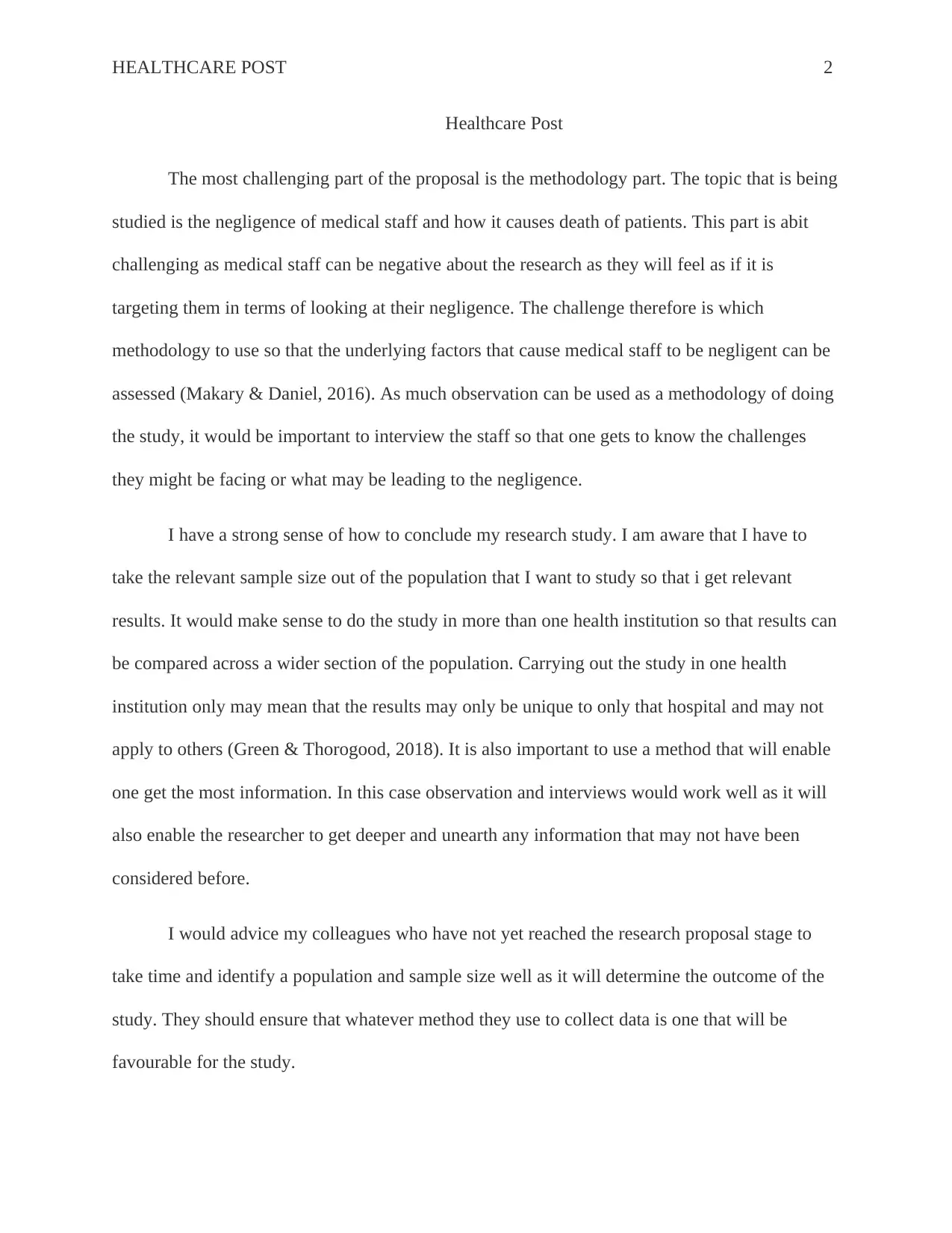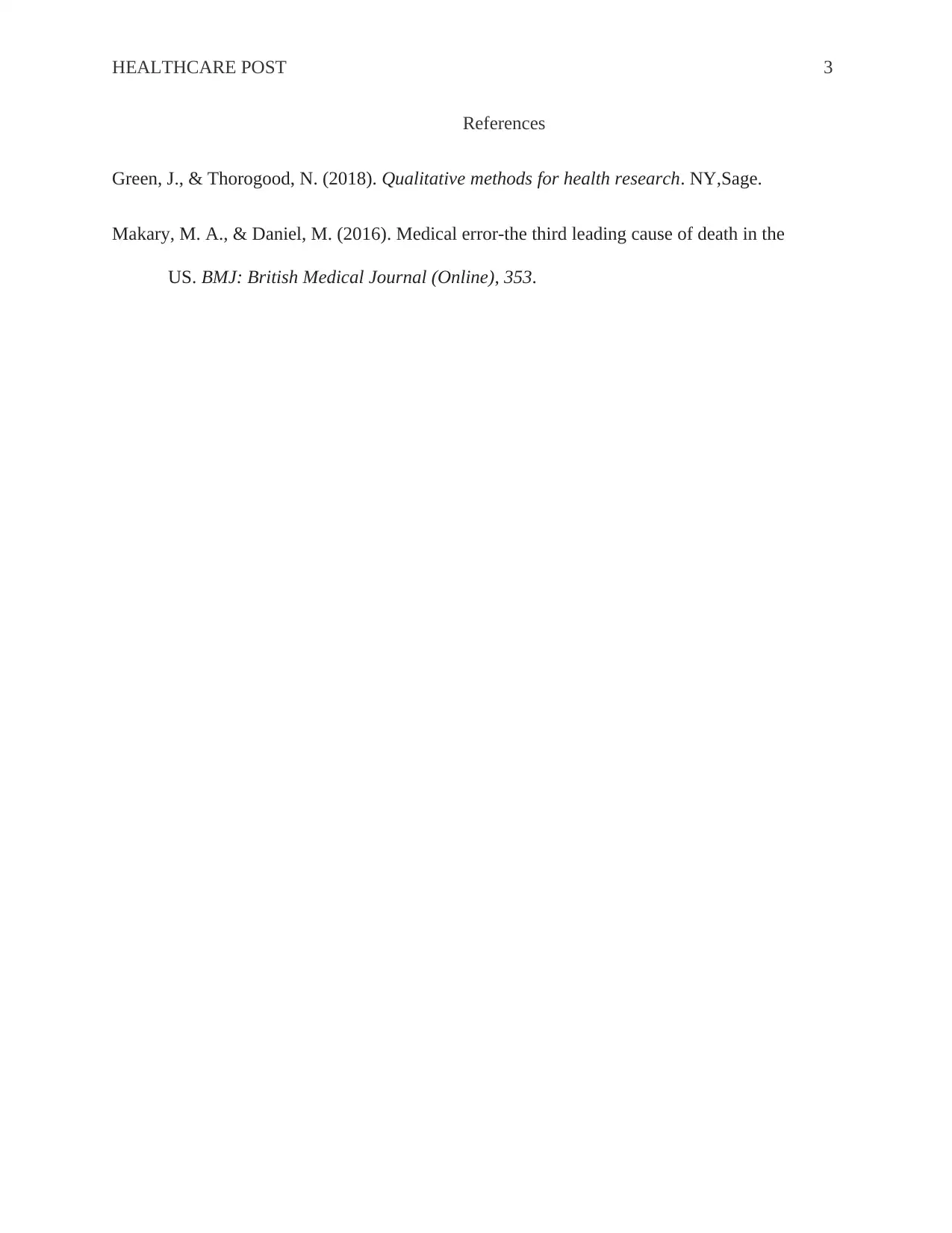Healthcare: Investigating Medical Negligence and Its Impact
VerifiedAdded on 2021/04/17
|3
|423
|178
Report
AI Summary
This report focuses on medical negligence in healthcare, exploring the challenges of studying this sensitive topic. The author discusses the difficulties in researching medical negligence, particularly in gathering data from medical staff, and proposes the use of both observation and interviews to gather information. The report emphasizes the importance of a well-defined sample size and the need to conduct the study across multiple health institutions to ensure the results' generalizability. The author also underscores the value of choosing an appropriate methodology for data collection and analysis. The report concludes by offering advice to other researchers, highlighting the importance of a clear methodology in the research process and the need for appropriate data collection techniques. References include Green & Thorogood (2018) and Makary & Daniel (2016).
1 out of 3










![[object Object]](/_next/static/media/star-bottom.7253800d.svg)